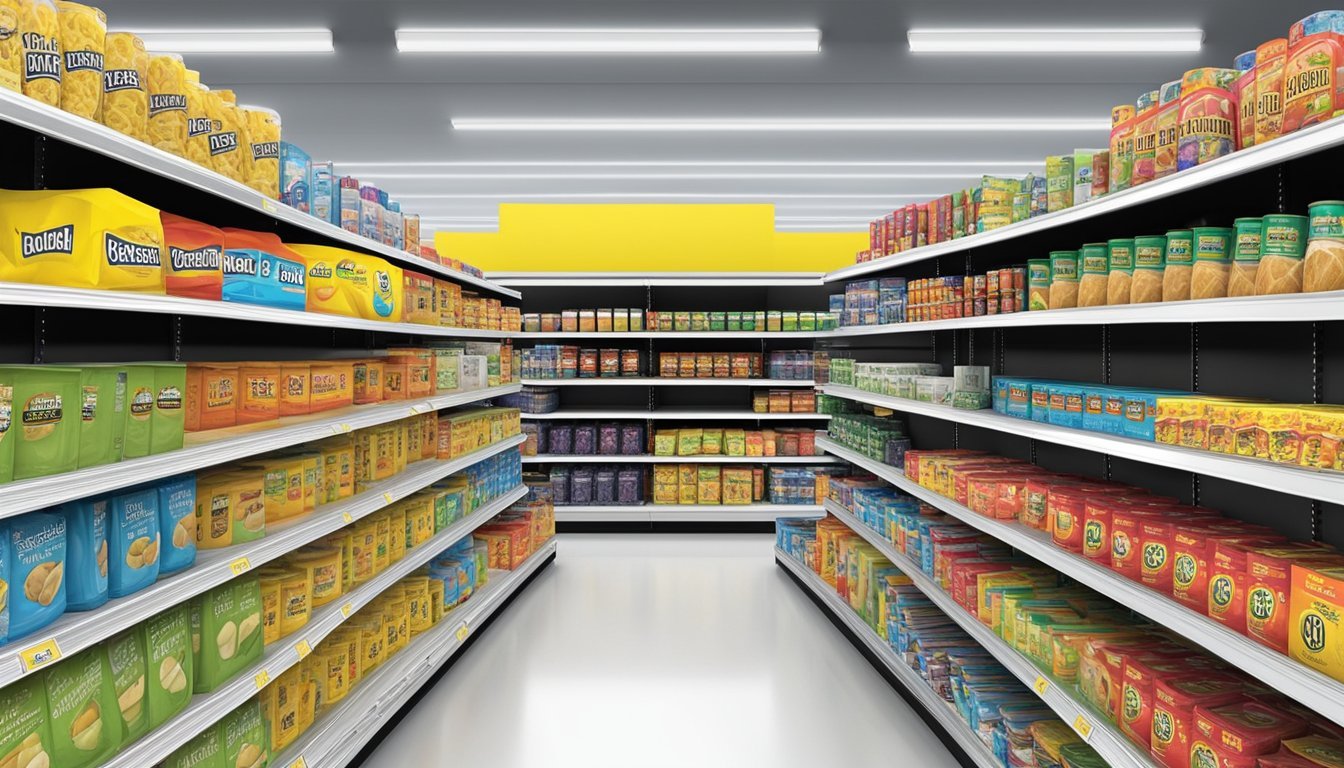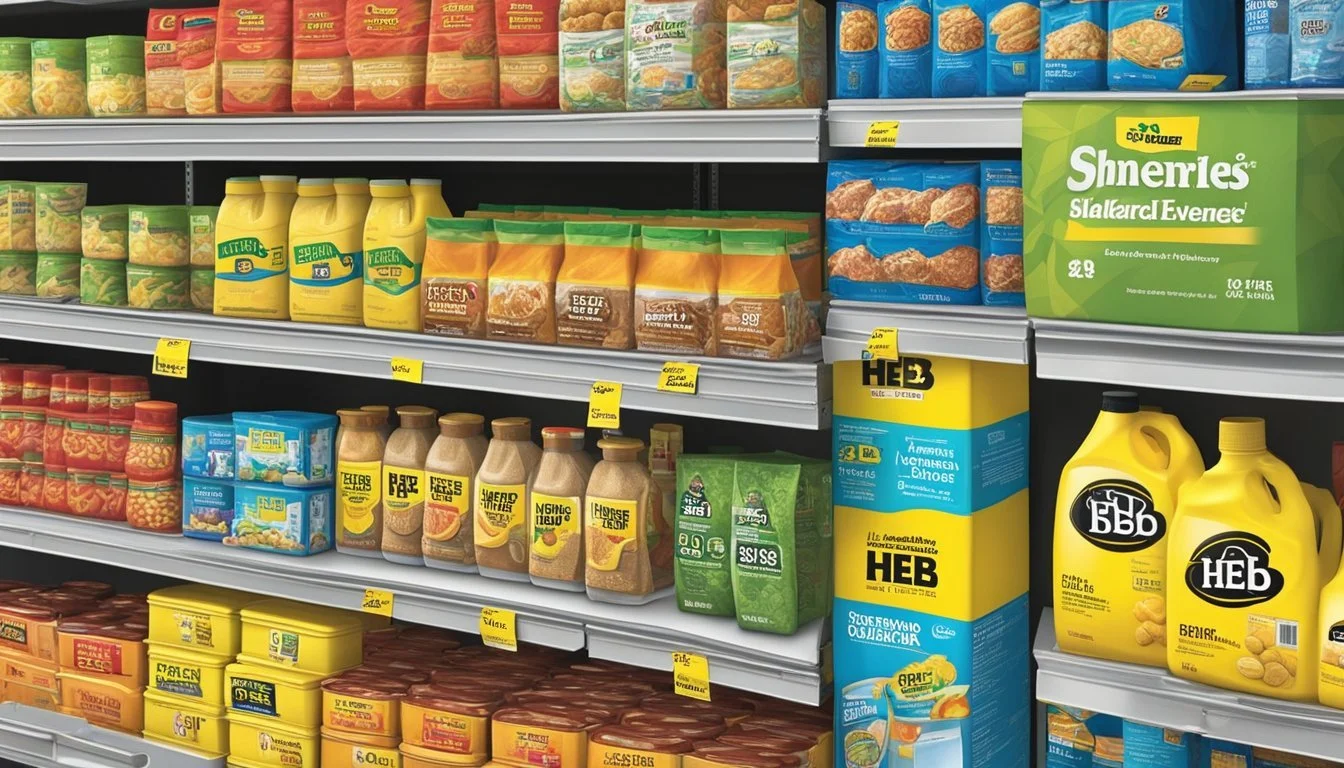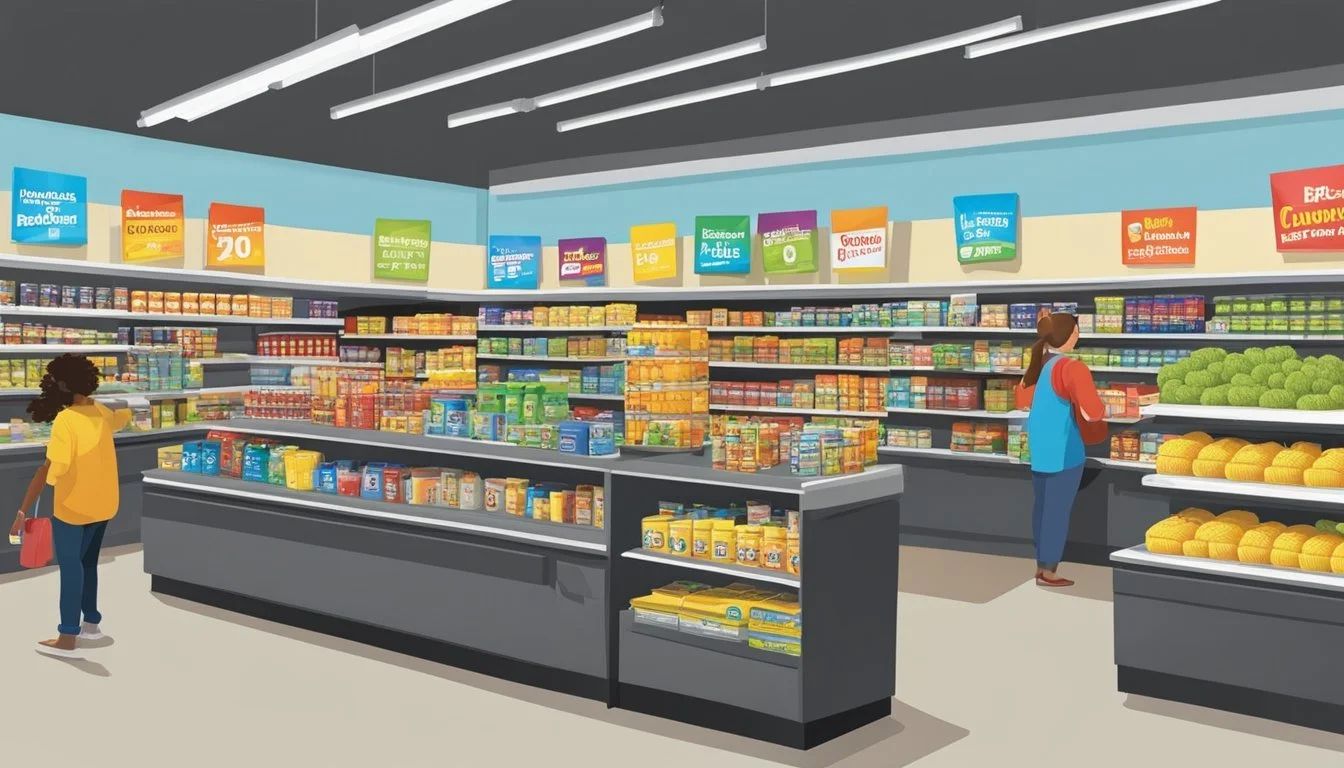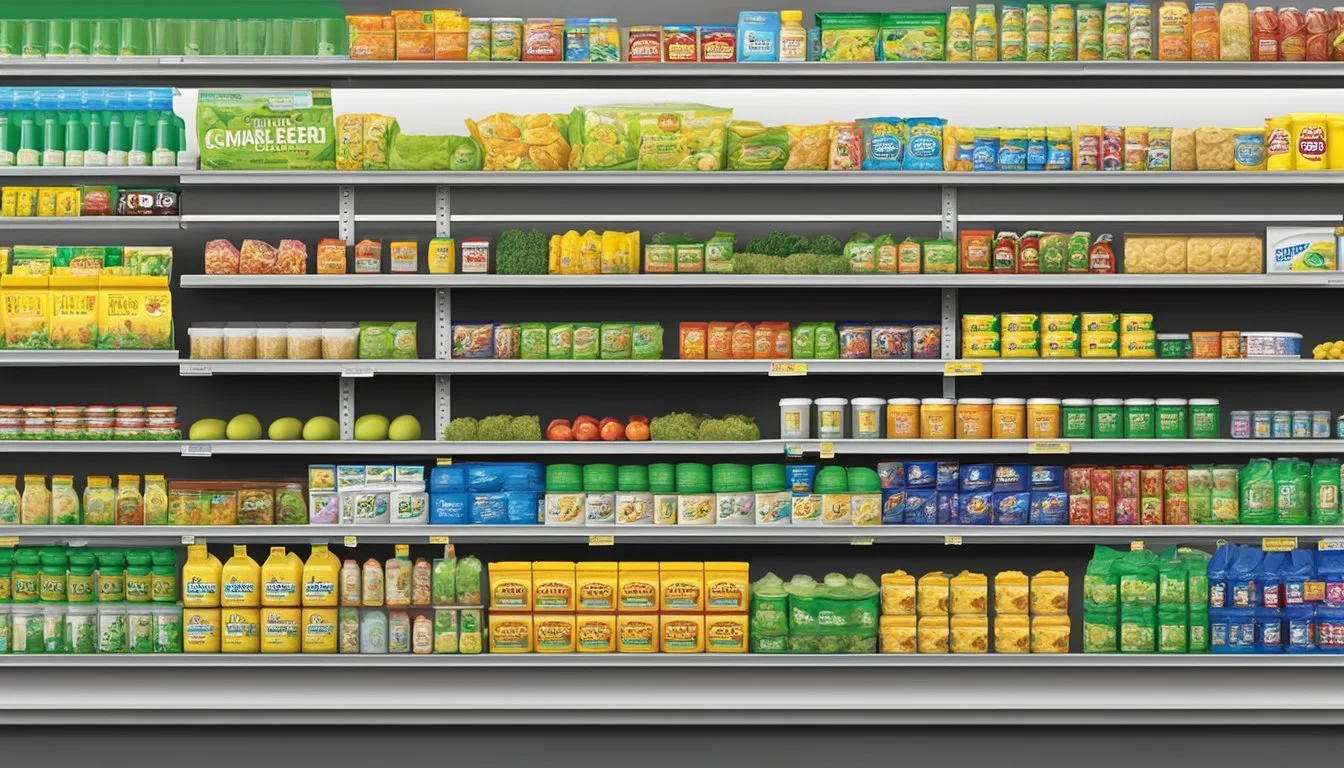Is Dollar General Cheaper Than H-E-B?
A Price Comparison of Two Popular Retailers
Dollar General and H-E-B are two popular grocery chains in Texas, each with its own loyal customer base. Many shoppers wonder which store offers better prices overall. While Dollar General often has lower prices on individual items, H-E-B tends to provide better value when considering product quality and selection.
Dollar General focuses on offering low prices across a wide range of household goods and packaged foods. The company keeps costs down through efficient operations and a no-frills shopping experience. H-E-B, on the other hand, is known for its fresh produce, meats, and store-brand products. The Texas-based chain emphasizes quality alongside competitive pricing.
Comparing prices between the two stores can be challenging due to differences in product offerings and sizes. Dollar General may have cheaper options for basics like canned goods or cleaning supplies. H-E-B often provides better deals on fresh foods and larger package sizes. Ultimately, savvy shoppers can find good values at both stores by focusing on each retailer's strengths.
Understanding Grocery Retailers
Dollar General and H-E-B represent distinct approaches to grocery retail. These companies cater to different market segments and employ unique strategies to attract and retain customers.
Profile of Dollar General
Dollar General operates as a discount retailer with a focus on offering everyday essentials at low prices. The company maintains over 18,000 stores across 47 U.S. states, primarily in rural and suburban areas.
Dollar General's stores are typically smaller than traditional supermarkets, averaging around 7,400 square feet. This compact format allows for quick shopping trips and lower operating costs.
The retailer stocks a mix of national brands and private label products. Its inventory includes food, snacks, health and beauty items, cleaning supplies, and basic apparel.
Dollar General's pricing strategy aims to keep items affordable, with many products priced at $1 or less.
Profile of H-E-B
H-E-B, short for Howard Edward Butt, is a privately held supermarket chain based in Texas. The company operates over 400 stores across Texas and northeast Mexico.
H-E-B stores are larger than Dollar General, typically ranging from 50,000 to 150,000 square feet. This extra space allows for a wider product selection and additional departments.
The retailer is known for its emphasis on fresh produce, meats, and bakery items. H-E-B also offers a variety of prepared foods and meal solutions.
H-E-B focuses on providing high-quality products at competitive prices. The company has developed numerous private label brands, which often rival or surpass national brands in quality.
Comparative Overview of Market Presence
Dollar General and H-E-B target different segments of the grocery market. Dollar General's extensive network of small-format stores gives it a strong presence in rural and underserved areas.
H-E-B, while having fewer locations, maintains a dominant position in Texas. The company's larger stores and diverse product range cater to a broader spectrum of shoppers.
Dollar General's expansion strategy focuses on rapid store growth across the U.S. H-E-B, in contrast, concentrates on deepening its presence in existing markets.
Both retailers have invested in e-commerce capabilities. Dollar General offers in-store pickup, while H-E-B provides both delivery and curbside pickup options in many locations.
Price Analysis
Dollar General and H-E-B employ distinct pricing strategies to attract customers. Their approaches impact overall costs and value for shoppers.
General Pricing Strategies
Dollar General focuses on offering rock-bottom prices across a limited selection of items. The company keeps costs low through efficient operations and no-frills store designs. This allows them to price products 20-40% below full-price retailers.
H-E-B takes a different approach, balancing competitive pricing with an emphasis on quality and customer experience. They offer a wider product range, including more premium and locally-sourced options.
Both chains use loss leaders - deeply discounted popular items - to drive store traffic. However, Dollar General relies more heavily on this tactic.
Item-by-Item Comparison
A basket-by-basket comparison reveals nuanced differences:
Item Dollar General H-E-B Milk (1 gallon) $2.95 $3.28 Bread (white loaf) $1.85 $1.98 Eggs (dozen) $2.25 $2.49 Bananas (per lb) $0.59 $0.52
Dollar General often wins on packaged goods and household items. H-E-B tends to have better prices on fresh produce and meats.
Influence of Private Label Products
Both retailers leverage private label products to offer budget-friendly alternatives. Dollar General's private brands focus primarily on household essentials and shelf-stable foods.
H-E-B's extensive line of store-brand items spans nearly every category, from basic to premium. This diversity allows H-E-B to compete on price while still offering higher-quality options.
Private labels boost profit margins for both chains, enabling them to keep prices low on other items. However, H-E-B's broader private label range gives them more flexibility in pricing strategies across the store.
Product Selection and Quality
Dollar General and H-E-B offer distinct product ranges and quality levels. Their selections cater to different customer needs and preferences.
Assortment Variability
Dollar General focuses on providing a limited but essential product range. The store stocks around 10,000 to 12,000 items, primarily consisting of everyday necessities and household goods. Many products come in smaller package sizes to maintain lower price points.
H-E-B, in contrast, offers a much broader selection. A typical H-E-B store carries 50,000 to 100,000 items, including fresh produce, meats, bakery goods, and specialty products. H-E-B also features an extensive range of store-brand items across various categories.
Quality Considerations
Dollar General's products are generally of acceptable quality for their price point. The store carries a mix of national brands and private-label items, with a focus on value rather than premium offerings.
H-E-B is known for higher overall product quality, especially in fresh categories. The chain's store brands often receive positive reviews for taste and quality. H-E-B also carries a wider range of organic, natural, and gourmet products compared to Dollar General.
Both retailers have their own quality control processes, but H-E-B's reputation for fresh produce and meats tends to be stronger than Dollar General's.
Cost-Saving Opportunities
Dollar General and H-E-B offer various ways for customers to save money on their purchases. These include rewards programs, regular sales, and benefits for buying in bulk or choosing store brands.
Rewards and Membership Programs
Dollar General's DG Digital Coupons program allows customers to load digital coupons onto their account for automatic savings at checkout. H-E-B's points-based loyalty program, H-E-B Points Club Rewards, enables shoppers to earn points on purchases and redeem them for discounts on future shopping trips.
Both stores offer mobile apps that provide exclusive deals and personalized offers based on shopping history.
Coupons and Sales
Dollar General features weekly ads with special discounts and clearance items. They also offer $5 off $25 purchase coupons periodically.
H-E-B runs regular sales and promotions, often featuring buy-one-get-one deals on popular items. Their yellow tags indicate temporary price reductions throughout the store.
Both retailers accept manufacturer coupons, allowing customers to stack savings on top of store discounts.
Private and Bulk Purchase Benefits
Dollar General's private label brands, like DG Home and Clover Valley, offer lower-priced alternatives to national brands without sacrificing quality.
H-E-B's store brands, including Hill Country Fare and H-E-B Organics, provide similar cost-saving options across various product categories.
Both stores offer bulk purchase options on certain items, allowing customers to save money by buying larger quantities. H-E-B's bulk section includes loose grains, nuts, and snacks, while Dollar General offers multi-packs of household essentials at discounted rates.
Shopping Experience
The shopping experience at Dollar General and H-E-B differs significantly in key areas. These include the ease of shopping, quality of customer service, and store layout.
Ease of Shopping
Dollar General offers a straightforward shopping experience focused on budget-friendly items. Stores are typically smaller, making it easier to find essentials quickly. Product selection is limited but covers basic needs.
H-E-B provides a more comprehensive shopping experience. Their larger stores offer a wider variety of products, including fresh produce, bakery items, and specialty foods. This can make shopping trips longer but more fulfilling for those seeking diverse options.
Both chains prioritize convenience, with Dollar General often located in rural areas and H-E-B concentrated in urban and suburban locations.
Customer Service Quality
Dollar General's customer service is generally adequate but minimal. Staff numbers are often limited, which can lead to longer wait times at checkout during busy periods. Employees are trained to be efficient rather than provide extensive assistance.
H-E-B is known for its superior customer service. The company invests heavily in employee training, resulting in knowledgeable and helpful staff. Customers can expect more personalized attention and assistance while shopping.
H-E-B also offers additional services like in-store cooking demonstrations and product sampling, enhancing the overall shopping experience.
Store Layout and Convenience
Dollar General stores feature a simple, no-frills layout. Aisles are typically narrow and packed with merchandise. This design maximizes the use of limited space but can feel cramped during busy times.
H-E-B stores are more spacious and organized. Departments are clearly defined, with wide aisles for easy navigation. The layout is designed to create a pleasant shopping environment, often including dedicated spaces for prepared foods and dining areas.
Dollar General focuses on quick trips for essential items. H-E-B caters to a broader range of shopping needs, from quick visits to extensive grocery hauls. Both chains strive to make their stores accessible and easy to navigate for customers.
Additional Factors to Consider
When comparing Dollar General and H-E-B, price is not the only factor to consider. Product selection, store locations, and shopping experience also play crucial roles in determining which retailer best suits a consumer's needs.
Grocery Bill Impact
Dollar General's limited grocery selection focuses on shelf-stable items and basic necessities. This can lead to lower overall grocery bills for shoppers who primarily purchase these types of products. H-E-B, on the other hand, offers a wider range of fresh produce, meats, and specialty items.
Consumers who cook frequently or prefer organic options may find H-E-B more suitable, despite potentially higher costs. Dollar General's $1 price point on many items can significantly reduce expenses for budget-conscious shoppers.
Lifestyle and Shopping Habits
Dollar General caters to quick, convenient shopping trips. Its smaller store format and limited selection make it ideal for grabbing essential items quickly. This appeals to busy individuals or those living in rural areas with fewer shopping options.
H-E-B's larger stores offer a more comprehensive shopping experience. They provide a wider variety of brands, specialty departments, and in-store services. Shoppers who prefer one-stop shopping or enjoy browsing may find H-E-B more aligned with their habits.
Operational Costs and Savings
Dollar General's business model focuses on keeping operational costs low. They typically have smaller stores, fewer employees, and a streamlined inventory. These factors contribute to their ability to offer lower prices on many items.
H-E-B invests more in store aesthetics, customer service, and product variety. While this may result in slightly higher prices, it can provide added value for shoppers who prioritize these aspects.
Both retailers employ different strategies to manage costs and pass savings to customers. Dollar General often uses smaller packaging sizes to maintain low price points, while H-E-B may offer larger bulk options for cost-conscious consumers.
Convenience and Accessibility
Dollar General and H-E-B differ in their approaches to convenience and accessibility. These factors play a crucial role in customers' shopping experiences and choices.
Location Accessibility
Dollar General boasts over 18,000 stores across 47 states, often situated in rural and suburban areas. This extensive network makes Dollar General highly accessible to many shoppers, especially those in smaller communities. The stores' typically smaller footprint allows them to operate in locations where larger retailers may not be feasible.
H-E-B, primarily concentrated in Texas, has fewer locations but offers larger stores with a wider product range. While less widespread, H-E-B stores are strategically placed in urban and suburban areas, catering to local communities with tailored offerings.
Shopping Apps and Online Accessibility
Both retailers have embraced digital technology to enhance customer convenience. Dollar General's app provides digital coupons, a shopping list feature, and the ability to check in-store availability. The company also offers DG Pickup for online orders at select locations.
H-E-B's app offers similar features, including digital coupons and shopping lists. Additionally, H-E-B provides a robust online shopping experience with home delivery and curbside pickup options in many areas. This service has become particularly popular, allowing customers to shop from home and save time.
Conclusion
Price comparisons between Dollar General and H-E-B reveal nuanced differences. Dollar General often offers lower prices on everyday essentials and national brands. H-E-B provides competitive pricing with a focus on local products and customer experience.
Consumer choice depends on individual priorities. Those seeking rock-bottom prices may prefer Dollar General. Shoppers valuing a wider selection and local goods might choose H-E-B.
Location plays a key role in decision making. Dollar General's widespread presence in rural areas makes it more accessible for some. H-E-B's strong regional foothold appeals to loyal Texas customers.
Both retailers employ strategies to keep prices low. Dollar General leverages efficient operations and strategic store placement. H-E-B utilizes local sourcing and customer loyalty programs.
Ultimately, the better choice varies based on specific needs, preferences, and location. Savvy shoppers may benefit from utilizing both stores for different purchases to maximize savings and satisfaction.







